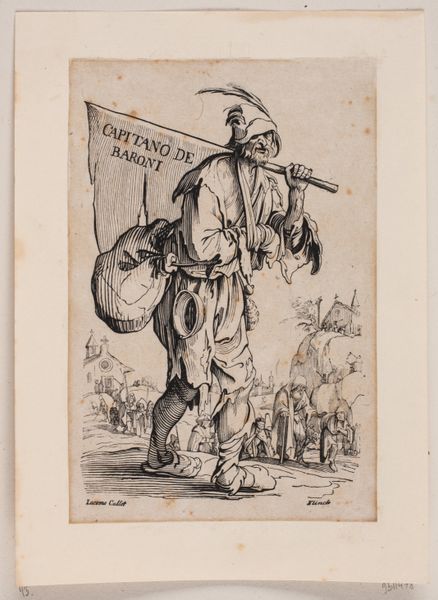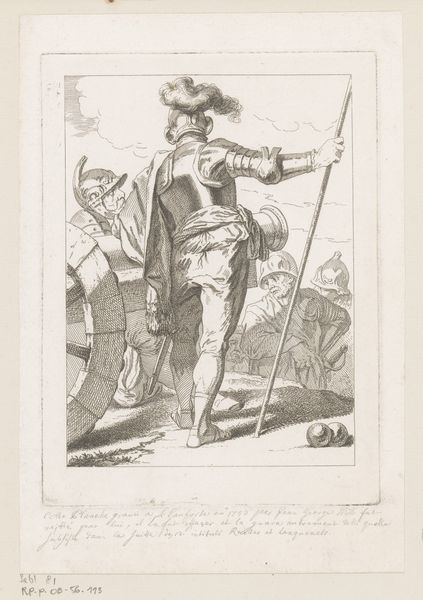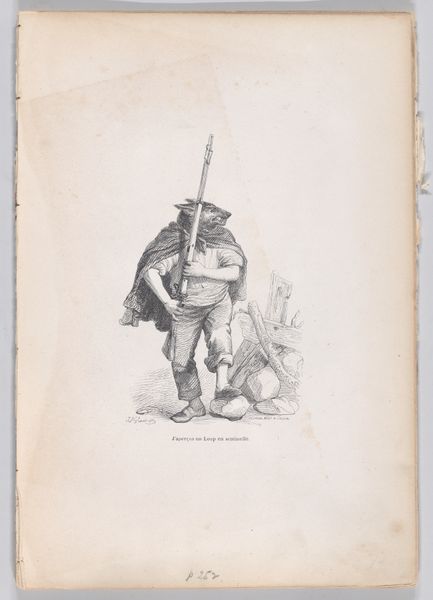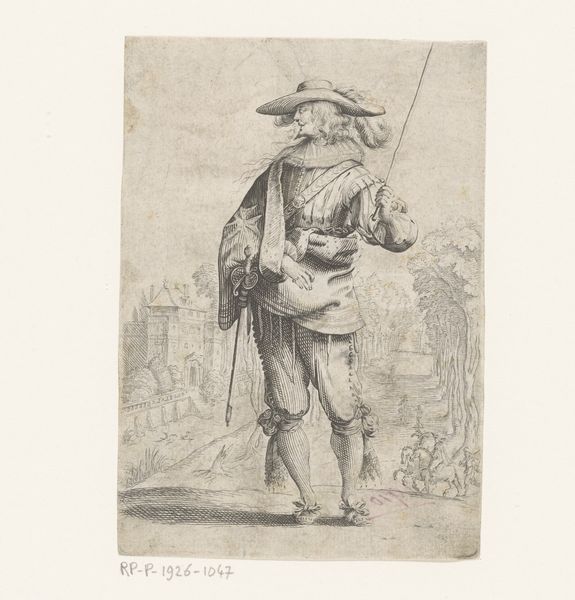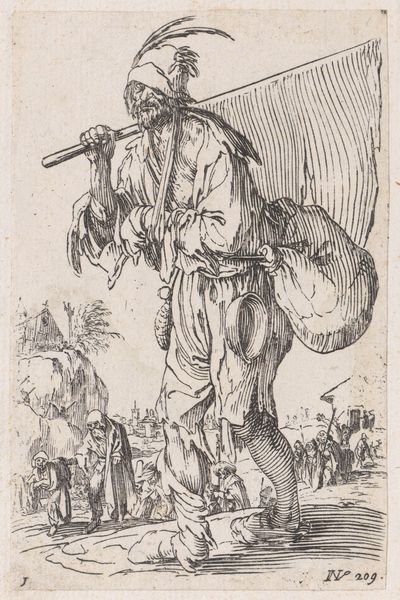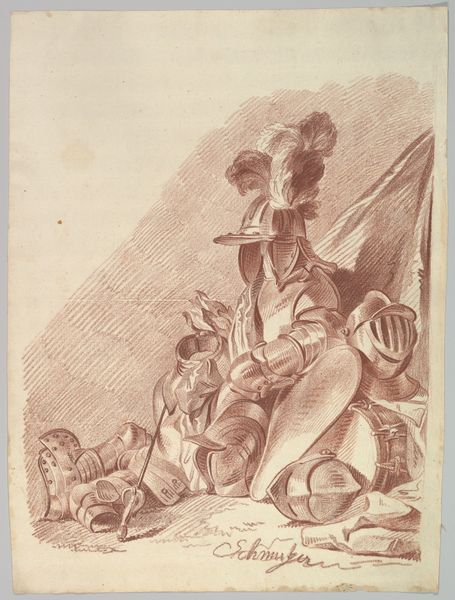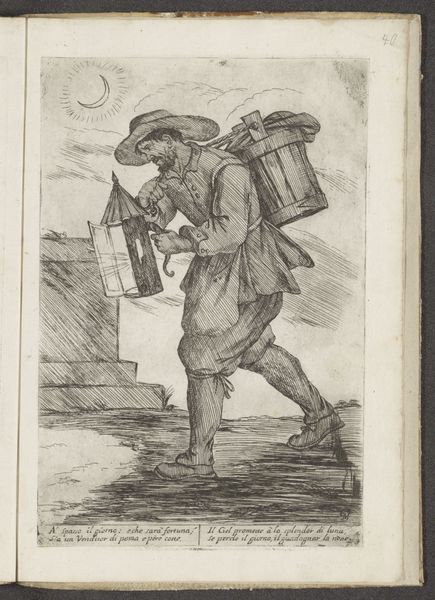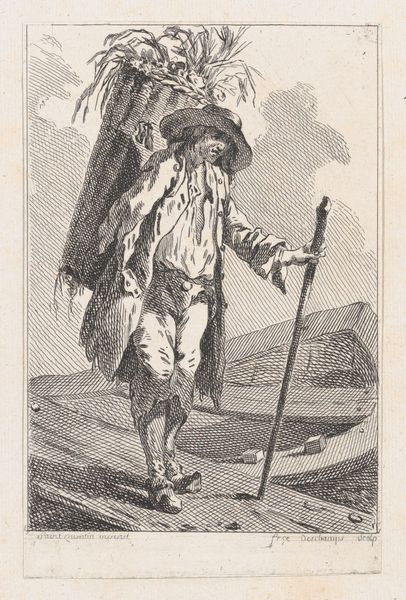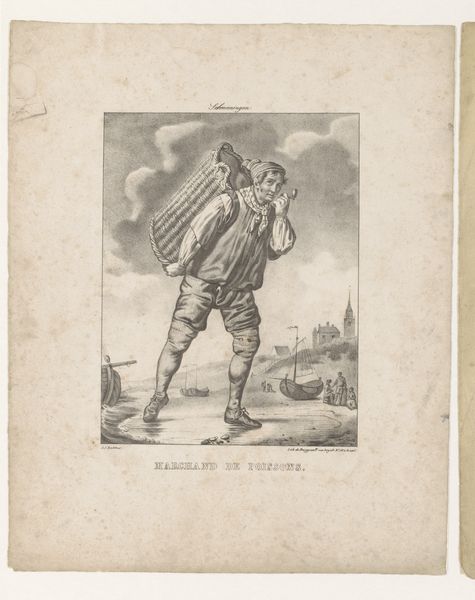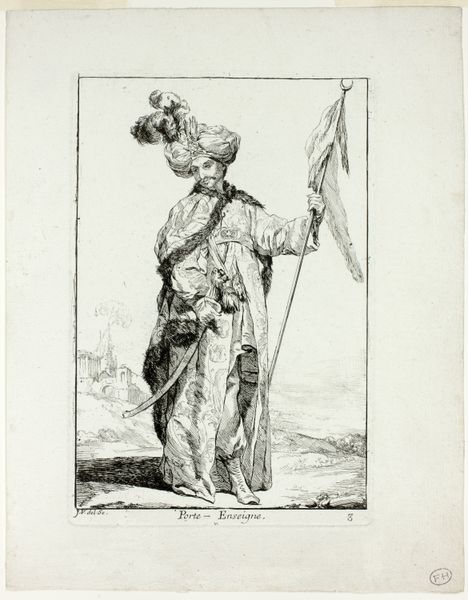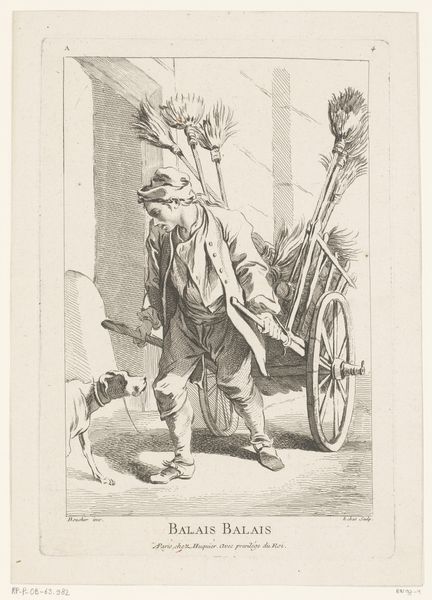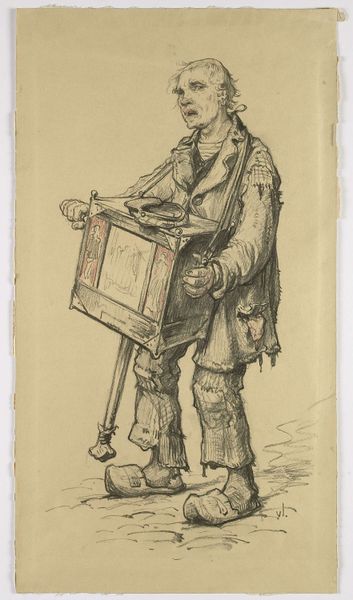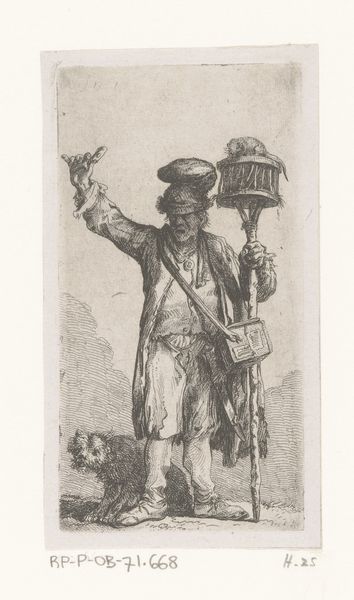
drawing, print, woodcut, engraving
#
drawing
#
narrative-art
# print
#
caricature
#
figuration
#
woodcut
#
line
#
history-painting
#
engraving
Dimensions: 204 mm (height) x 154 mm (width) (bladmaal)
Curator: This is Andreas Flinch’s "Capitano de Baroni," likely made sometime between 1813 and 1872. It’s a striking engraving, held here at the SMK. Editor: It's… unsettling. There's something haunting about the figure's weary stride and the strange flag he carries. A sense of displacement perhaps, and maybe disillusionment. Curator: Notice how Flinch uses very fine lines to build up the form. The intricate cross-hatching gives the figure a palpable texture, despite being rendered in such a graphic style. There's a strong linearity throughout, a precise articulation of form. Editor: Yet, what about the narrative it implies? A lone figure labeled "Capitano de Baroni." A Captain of… what exactly? He seems burdened by his possessions, almost a caricature of a military figure, trudging along with a following. This piece makes me consider the long tradition of critiquing power structures through seemingly harmless imagery. How can we think about militarization? Curator: Ah, but the beauty is also in the form. See how the diagonal of the flag leads our eye across the composition. Flinch is meticulously arranging the elements to create visual interest. His decision to use of stark contrasts creates depth and dynamism. Editor: I do concede to your point—it’s interesting how the linear technique also speaks to fragility, as the etching feels exposed, revealing the vulnerable human beneath layers of hierarchy. To that effect, doesn’t it beg the question—to what extent does representation enable or obstruct emancipation? Curator: I appreciate how it encourages us to consider these dualities inherent within visual representation. The balance is the most potent message, to me. Editor: Indeed, in analyzing this piece, one confronts larger conversations regarding our responsibility as art historians today to not only acknowledge but unpack these structures.
Comments
No comments
Be the first to comment and join the conversation on the ultimate creative platform.
